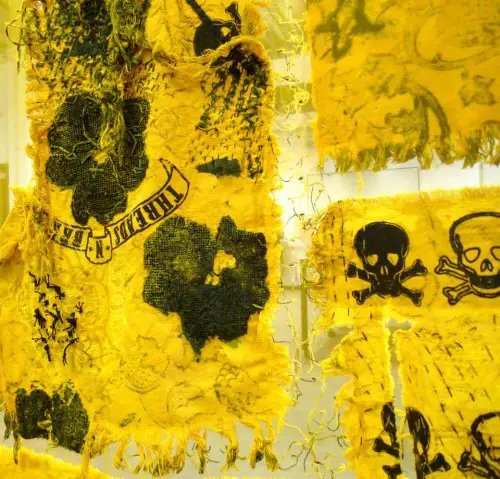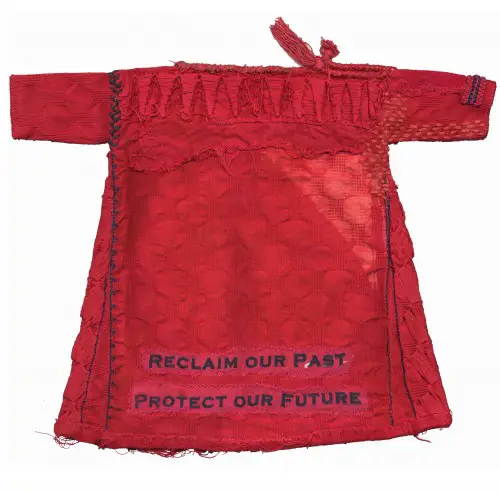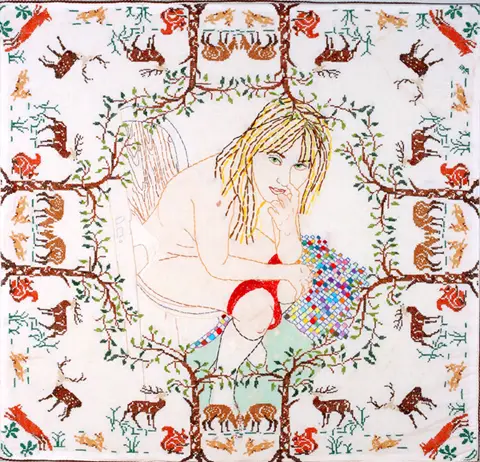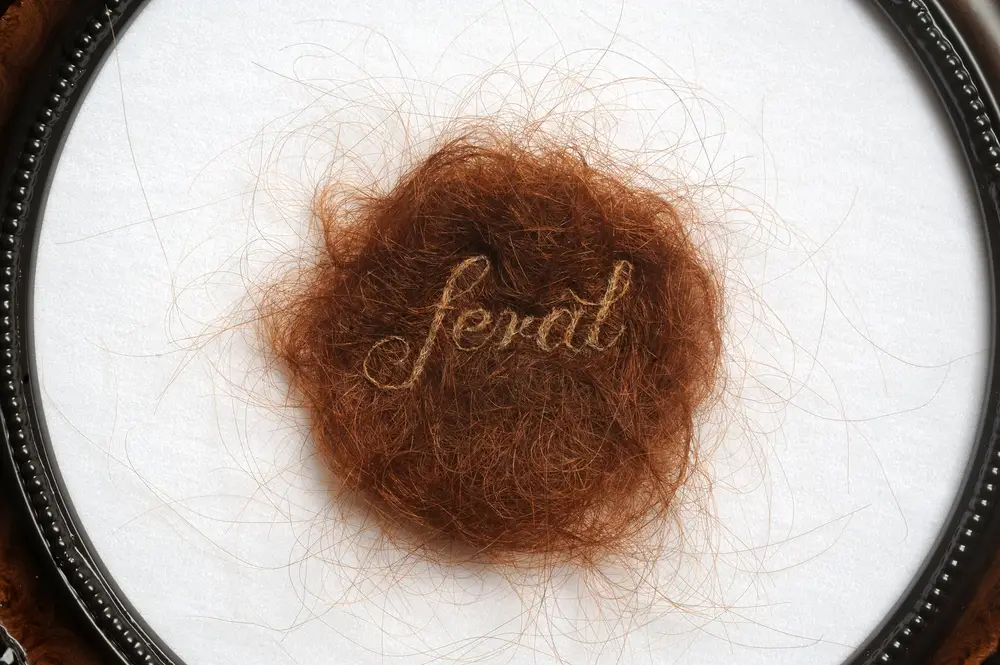Emma Blackburn is a textile artist from Manchester.
“Emma Blackburn’s work aims to encourage people to think differently about fragmented, ‘dead’ and hidden objects and their connection with the past. She is particularly interested in how curators interpret, conserve and present historic textiles. As such, the majority of her artwork has responded to specific places including country houses, museums and galleries and their collections and archives.
Historic research plays an important part in informing Blackburn’s practice. She has studied banner conservation at the Peoples History Museum where she explored how support fabrics are used to create visual infill, structural stability and aid interpretation of damaged textiles. This research generated large-scale ideas and explorations using traditional textile methods including hand embroidery, dye and screen-print.
“For Blackburn’s final MA piece: Red Tunic (2013), she was commissioned to respond to the Ancient Egyptian textile collection at the Whitworth Art Gallery. Here, she re-interpreted a child’s garment to reflect the fragile relationship between life and death, or more specifically for this commission, the ‘life’ in cloth, attempting to re-connect a fragment with its past. Intervention with museums and their audiences is considered to be a significant element of Blackburn’s work and its development in the future.”
One of the things that interests me about Emma’s work is the historical connection and the way her work has been influenced by her involvement with the People’s History Museum. Her work is contemporary in construction, yet looks as though it was made a very long time ago. The statements applied to the work transform them from simplistic objects to contextual icons; we can understand them more readily and they don’t necessarily need an accompanying narrative to begin the dialogue.
With strong connections to political activism through craft, which is something that will always appeal to me, and a clever application of technique in destroying and reconstructing the materials, Emma’s work is very clever. I’ll be interested to see what she comes up with next.











